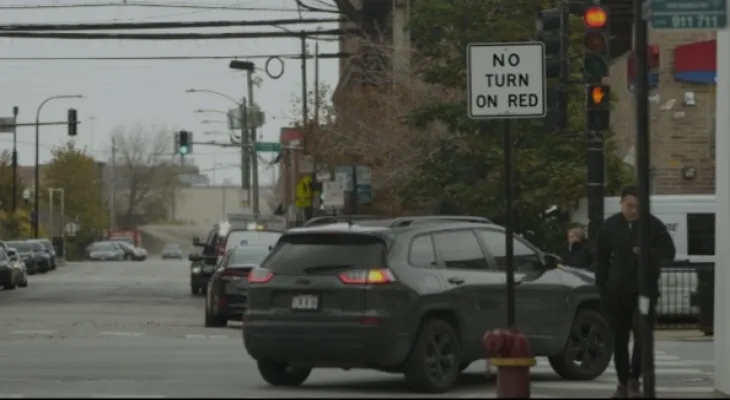Search here
Newspaper
Search here

Arab Canada News
News

Published: November 13, 2023
In an attempt to prevent pedestrian and cyclist deaths, more North American cities are considering following Montreal's example by banning drivers from turning right on red.
But despite decades of debate, even road safety advocates who favor the ban say there is a lack of reliable data proving that this measure improves safety.
Valerie Smith, director of road safety and safe mobility programs at the Parachute Injury Prevention Group, said allowing drivers to turn right on red creates a "hostile environment" for pedestrians and cyclists – especially children, seniors, and people with mobility issues. She said it forces pedestrians to deal with distracted drivers and gauge whether the approaching driver will stop for them.
She added in a phone interview from Kremour, Ontario: "When I think about the potential collision opportunities, the serious injuries resulting from those collisions, or fatalities, I really think it makes a lot of sense to seriously consider imposing a ban on right turns on red."
Montreal is the only major Canadian city that systematically bans right turns on red, while New York City is the only major American city that bans it in most locations.
As the Associated Press reported this month, a number of cities have voted to restrict the maneuver or are discussing doing so, including Washington D.C., Chicago, and Ann Arbor, Michigan.
In Canada, there has sometimes been opposition to banning right turns on red. In late 2016, mayors of 15 municipalities in the Montreal suburbs unsuccessfully pushed to repeal the ban, citing declining road death rates, and argued that drivers in Quebec were not more dangerous than drivers elsewhere in North America.
Toronto also discussed imposing a city-wide ban on right turns on red (RTOR) as part of its Vision Zero strategy, which aims to eliminate pedestrian and cyclist deaths, but instead chose to implement the measure only at selected intersections.
The city's media relations department said in an email that the city "found that there would be potential safety benefits at some locations, but at other locations, introducing an RTOR ban could lead to less safe conditions for people walking and cycling."
Reasons cited against the ban in the report include the fact that it "inevitably concentrates the full volume of vehicle demand turning right on the green signal phase" and in some cases may increase conflicts at crossings with larger numbers of pedestrians.
Nicholas Saunier, a civil engineering professor at Polytechnique Montreal, said it is "not clear" whether the ban on right on red is statistically safer in preventing pedestrian and cyclist injuries and deaths.
He tends instead to favor any measure that makes more vulnerable road users safer and encourages people to walk and cycle confidently.
Road safety advocates, including the pedestrian advocacy group Piétons Québec, argue that people die when right turns on red are allowed. The province legalized this maneuver outside Montreal Island in 2003, and the group says it led to seven pedestrian deaths and 37 serious injuries between that year and 2015. Advocates say many drivers fail to follow the rules requiring them to come to a complete stop before turning, and larger vehicles such as SUVs pose greater risks to pedestrians.
Both Saunier and Smith said that the lack of recent and comprehensive studies on right-turn-on-red safety remains a barrier for cities considering new rules.
Saunier also added this may be partly due to the rarity of incidents and the involvement of several variables, including traffic signals and driver behavior. He said: "There must be many factors coming together to cause an accident, so it fluctuates a lot."
Comments